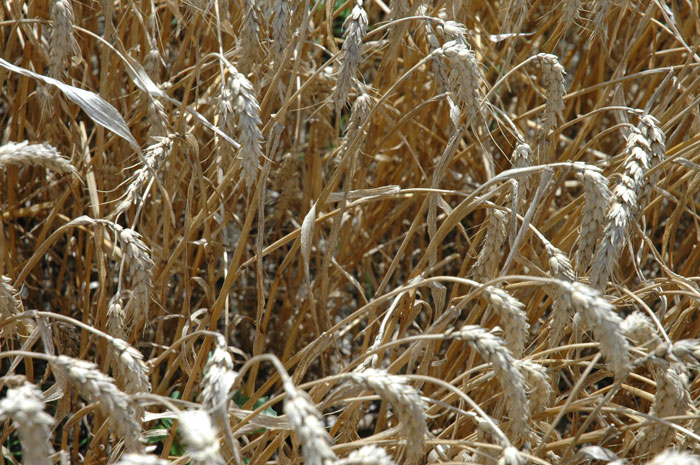October 2, 2015

At this writing, the KC July 2016 wheat contract price is $5.25. The 2016 harvest forward contract basis the KC July 2016 wheat contract price is minus 40 cents at Perryton, Texas, and minus 38 cents at Pond Creek, Okla. The basis range is from minus 50 cents in southern Oklahoma to minus 27 cents near Enid, Okla.
A KC July 2016 contract price of $5.25 and a minus 40-cent basis translates to a forward cash price of $4.85. History shows that the cash price could be anywhere from $3.30 (June 2009) to $8.45 (June 2008). The current odds favor a price closer to $3.30 than $8.45.
Depending on the farm, the variable (out of pocket) cost of production may be between $3.75 and $5.25 per bushel. Some producers are asking, “If the expected price is below the cost of production, why produce wheat?”
A simple answer is that wheat is a storable commodity and does not have to be sold at harvest. Between June 2, 2008 and August 31, 2015, wheat prices have averaged $6.28 before storage costs and $6.15 after subtracting storage costs.
Assume your cost of production is $4.50. Since June 2008, the cash price, adjusted for storage, 12 percent of the time has been below $4.50. Another way to look at this is that 87.3 percent of the time, cash wheat prices were above the $4.50 variable cost of production. Market prices have been above the $5 cost of production 75 percent of the time.
Price can change rapidly
No one knows when prices are going to be above or below the cost of production. We do know that, most of the time, the price is above the variable cost of production, and that fact is what counts.
Another fact is that wheat prices change rather rapidly. On June 9, 2010, cash wheat prices were near $3.30. By August 5, 2010, the price had increased to $8.50, and by February, it had increased to near $9. In mid-June 2012, the price was $6. On July 20, it was $8.81.
Going the other direction, in mid- to late-June 2008, the wheat price was $8.60. By mid-October, it had declined to $4.50. In mid-June 2014, the wheat price was $7. By mid-September, the price had declined to $5.25.
For the latest on southwest agriculture, please check out Southwest Farm Press Daily and receive the latest news right to your inbox.
To be above nearly all producers’ variable cost of production, the June 2016 forward contract price only has to increase about 25 cents. Factors that could result in higher prices include below expected production by Argentina and/or Australia, relatively poor planting conditions for the 2016 U.S. winter wheat crop, or a decline in the value of the U.S. dollar compared to other major currencies.
Any change in these factors could result in up to a $1 or so price increase. For prices to increase into the $7 or $8 range, a major reduction in 2016/17 foreign wheat production would be required.
Potential for rally limited
However, the fact that 2015/16 world wheat marketing year production is projected to be the third record crop (26.9 billion bushels) in a row, that world wheat ending stocks are projected to be 8.3 billion bushels, and that the world’s stocks-to-use ratio is projected to be 31.6 percent (the highest since the 2001/02 marketing year), will limit any potential price rally.
Other facts that must be considered are that the marketing system works, the market must provide farmers a profit for producing wheat, the cure for low prices is low prices, and the cure for high prices is high prices.
No one can predict prices. However, analysts can predict price ranges and the factors that will cause prices to increase or decrease. And, it’s a lead pipe cinch that prices below the cost of production will result in prices going above the cost of production … sometime.
About the Author(s)
You May Also Like






